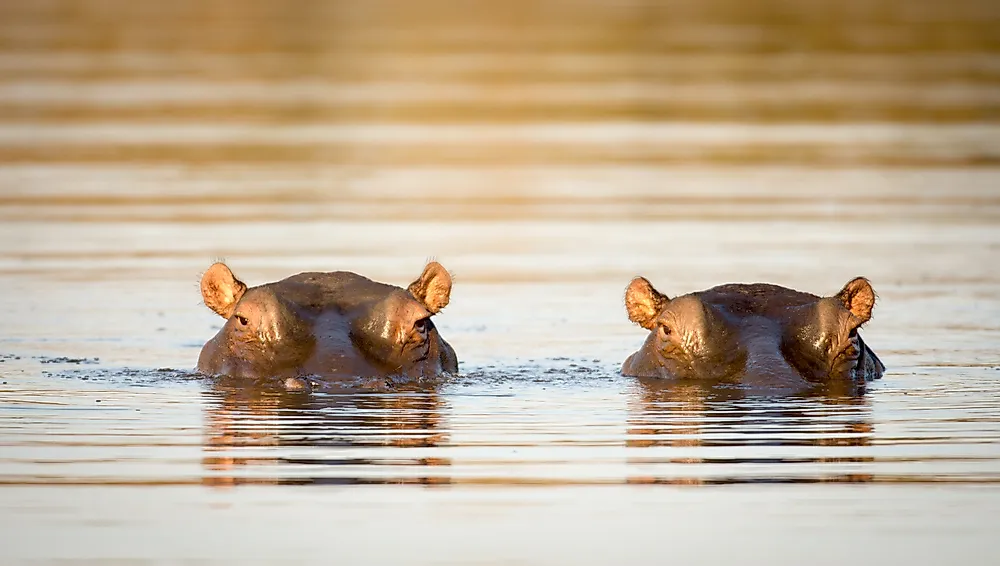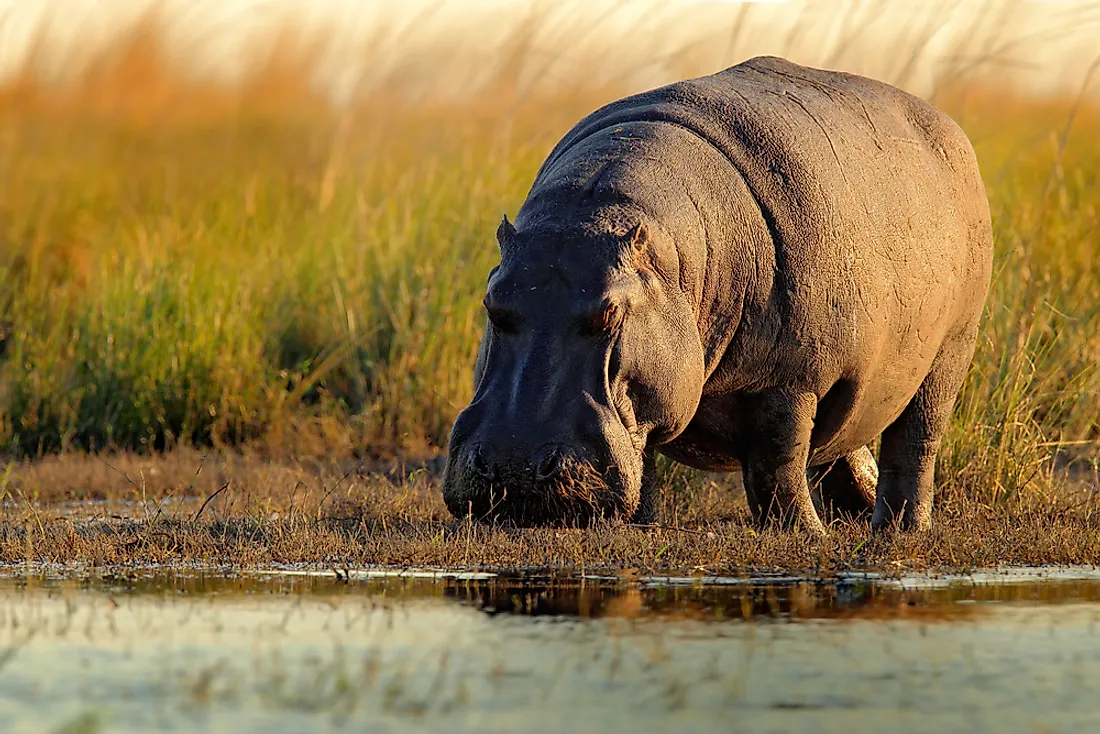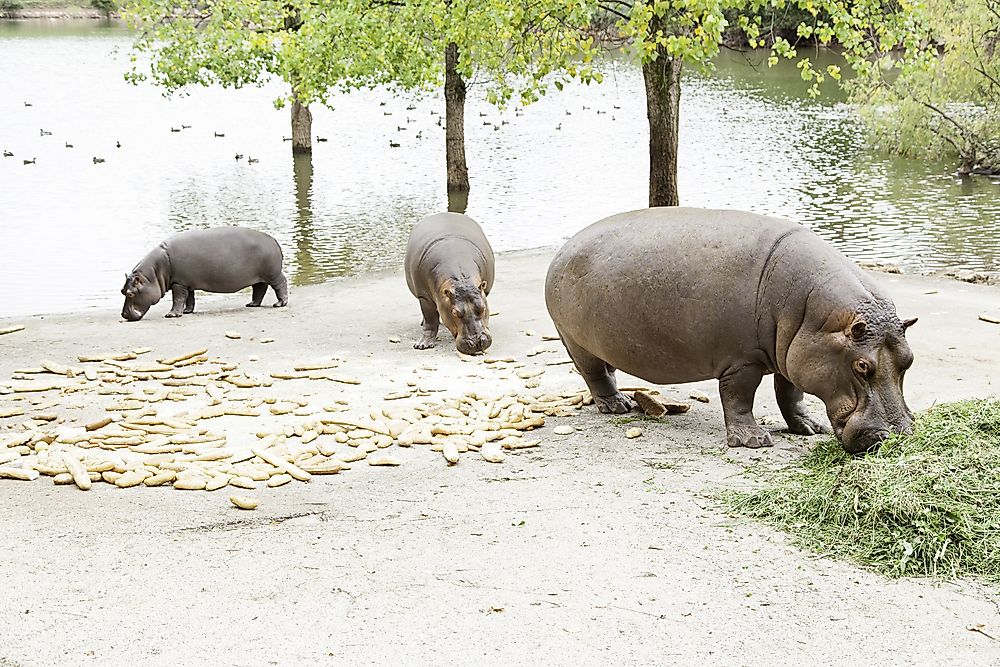How Many Types Of Hippos Are There?

The hippopotamus is also referred to as a hippo, and it is a huge amphibious animal. Due to its semiaquatic way of life, the animal derives its name from the Greek word for “river horse.” The hippo is one of the largest land mammals only surpassed by the elephant and the rhino. The amphibious mammal is closely related to the whale, porpoise, and dolphin. The creature has a huge, broad head, a bulky, barrel-shaped body, and miniature legs. A male hippo generally weighs between 3,527 lbs and 7,055 lbs while the female weighs between 1,444 lbs and 5,167 lbs. A hippo has a length of between 9.8 feet and 18 feet. The hippo reaches sexual maturity after five to six years in case of the female hippo and six to nine years for the male hippo. The hippo’s native home is sub-Saharan Africa. Currently, there are only two species of the hippopotamus still in existence, the pygmy hippopotamus and the common hippopotamus.
2. Common Hippopotamus (Hippopotamus amphibius)

The common hippopotamus is slightly larger than the pygmy hippopotamus. The creatures are mainly found around water bodies such as lakes, rivers, and mangrove swamps. They prefer areas with shallow, slow-moving water where they can float all day. They have stocky trunks and weigh between 1.5 and 3 tons. They have hairless skin that is gray or brownish red with pink areas on the face.
The common hippopotamus spends a lot of time submerged in water. Their nostrils and eyes protrude above the head to enable them to breathe and see while partially submerged in water. They have wide mouths and long sharp canines that they use to scare away predators and rival hippos.
Common hippos like to stay in herds of between 10 and 20 animals. Large herds of up to 200 common hippos have been spotted in some cases. The herds mainly consist of one dominant male hippo and ten female hippos along with their offspring. The male hippos often guard their territory in the water.
The common hippopotamus spends their day submerged in water or mud, cooling off. In the night, they come out and move to land to search for food. Hippos are herbivores and therefore feed on vegetation such as grass and shoots. During dry seasons when there is little vegetation, the hippos often invade nearby farms.
The common hippos face numerous threats such as loss of grazing land to human activity, predation, and climate change. The current population of the common hippopotamus is estimated at between 125,000 and 148,000 animals spread out in 29 sub-Saharan nations.
1. Pygmy Hippopotamus (Choeropsis liberiensis or Hexaprotodon liberiensis)

The pygmy hippopotamus shares a lot of features with the common hippopotamus. They have stocky bodies, hairless gray or brownish skin, long sharp canines, and nocturnal tendencies. However, pygmy hippos are slightly smaller compared to the common hippos. An adult pygmy hippo weighs between 397 lbs and 606 lbs. Pygmy hippos’ eyes and nostrils do not protrude from the head like those of common hippos.
Pygmy hippos live near forests and swampy areas. Unlike the common hippos that are spread out through Sub-Saharan African countries, pygmy hippos are only found in the rainforests of West Africa. The creatures live a more solitary life and they are found in pairs of mother and offspring or breeding pairs. Pygmy hippos graze on leaves in the forests at night. The hippos breeding habits are unique because they breed both in water and on land.
Pygmy hippos are classified as endangered species by conservationists. The leading threat to pygmy hippos’ is deforestation which leads to loss of habitat. The other significant threat is predation by humans. Currently, their population is estimated at less than 3,000 animals living in West Africa.











